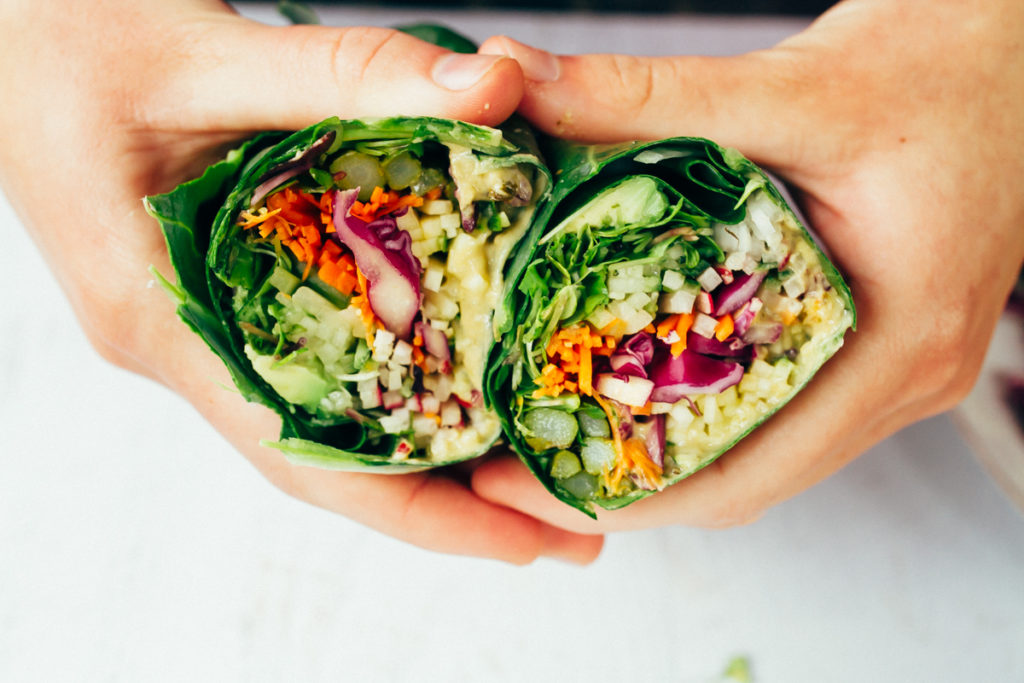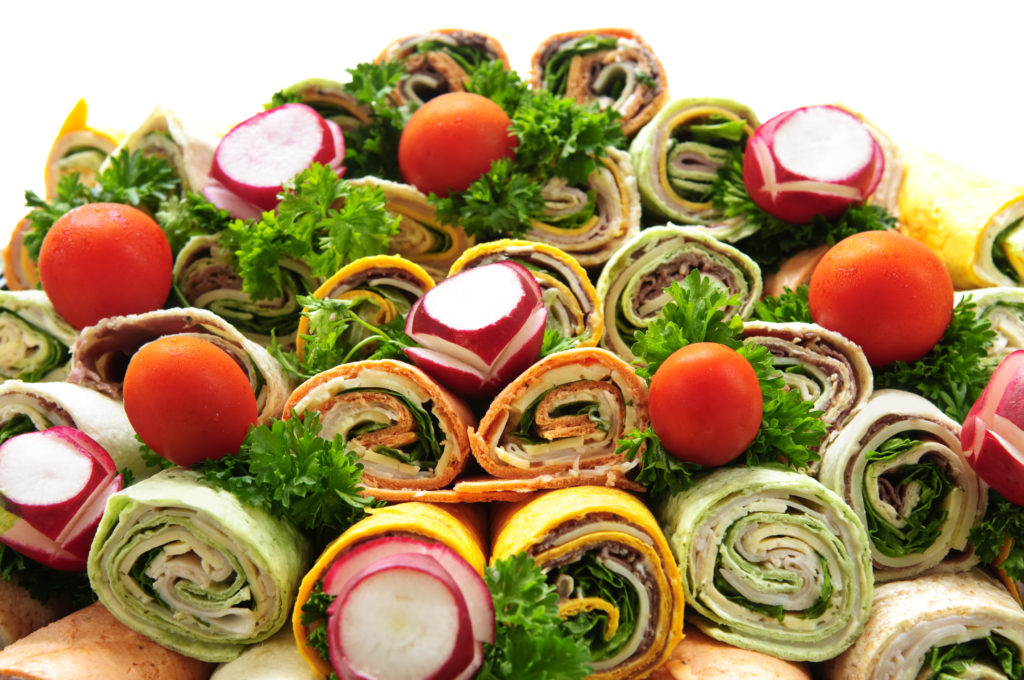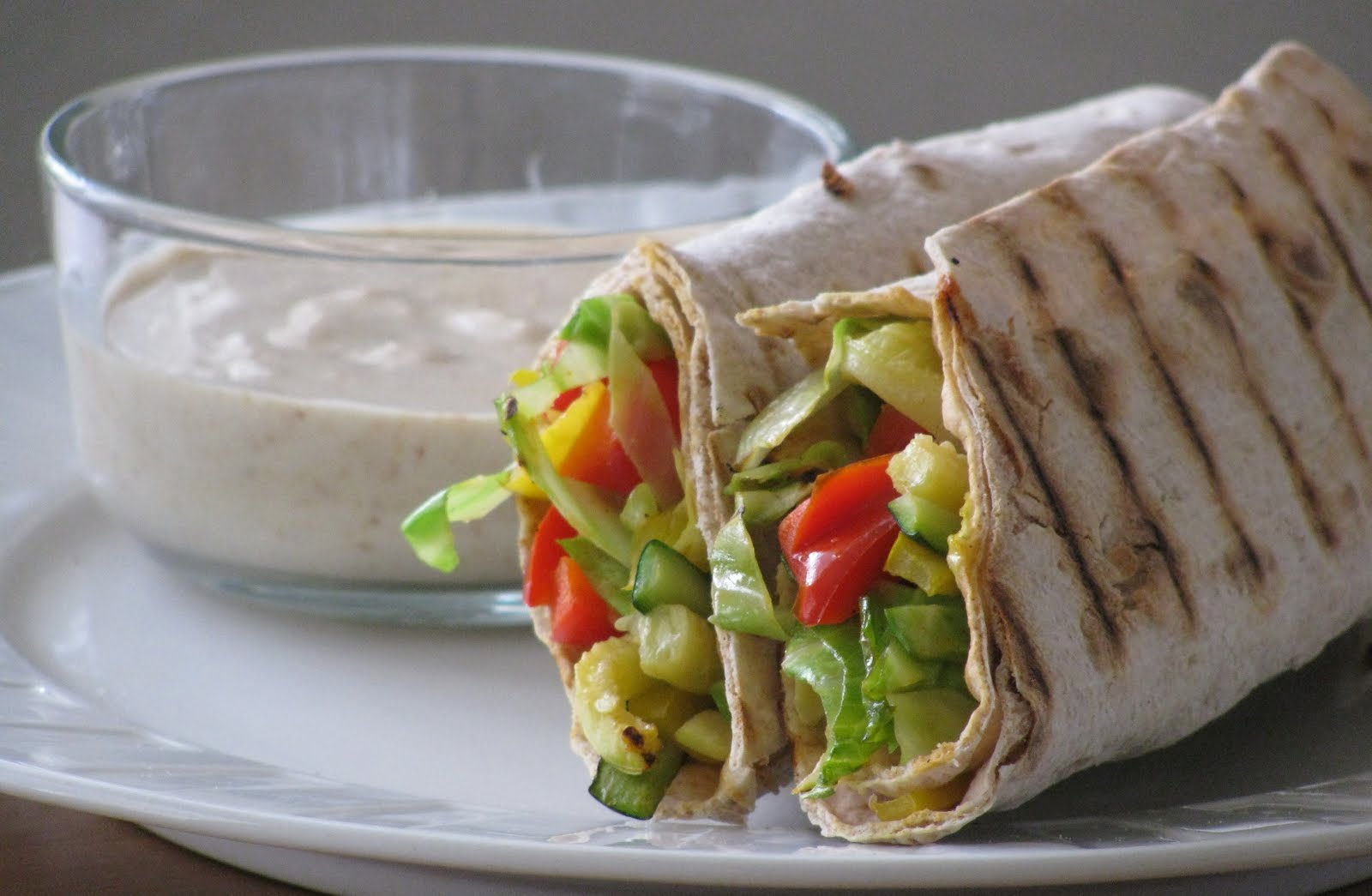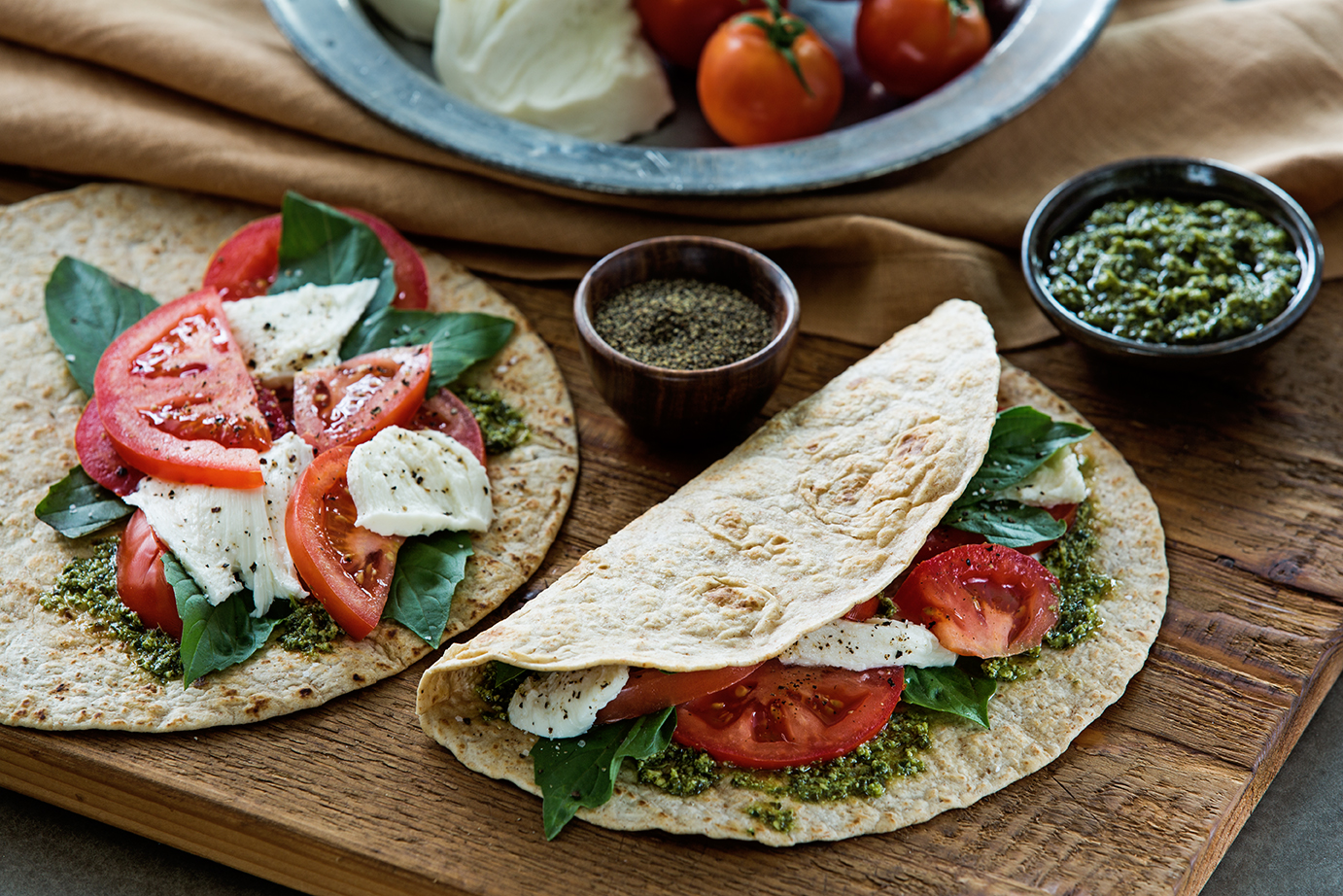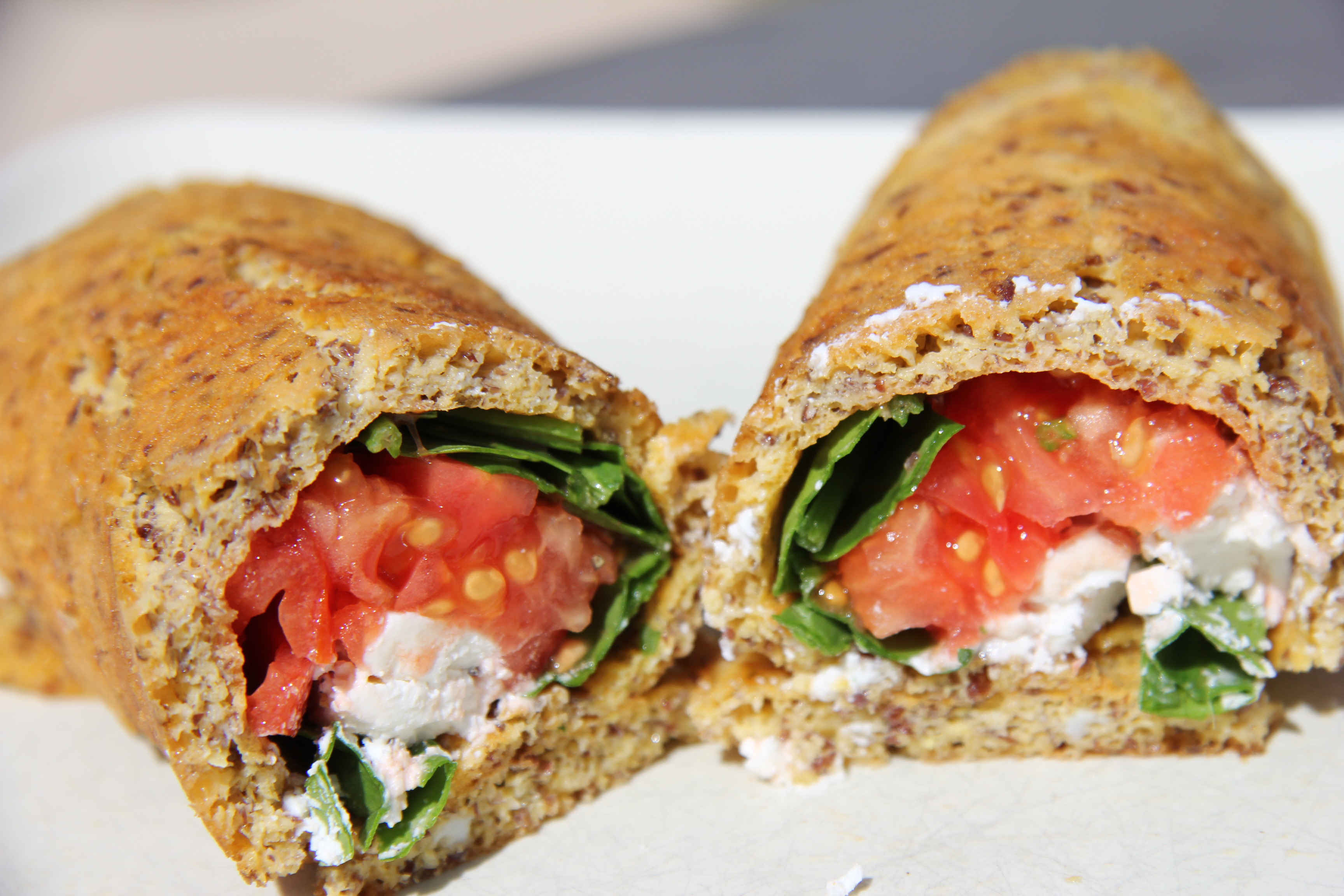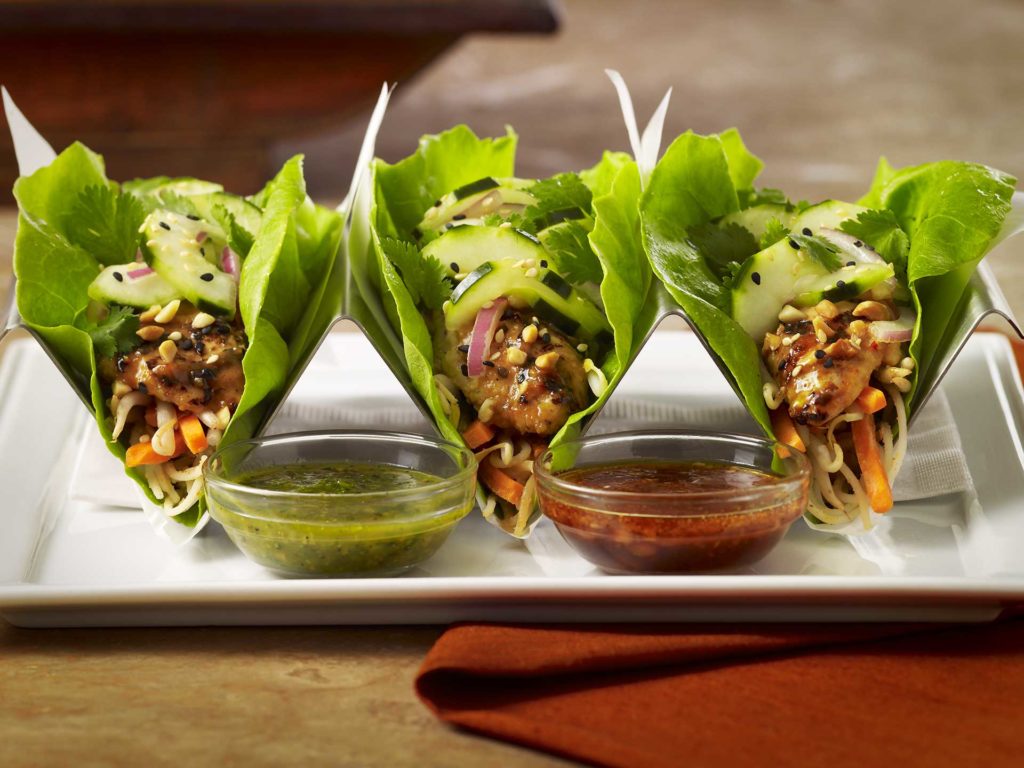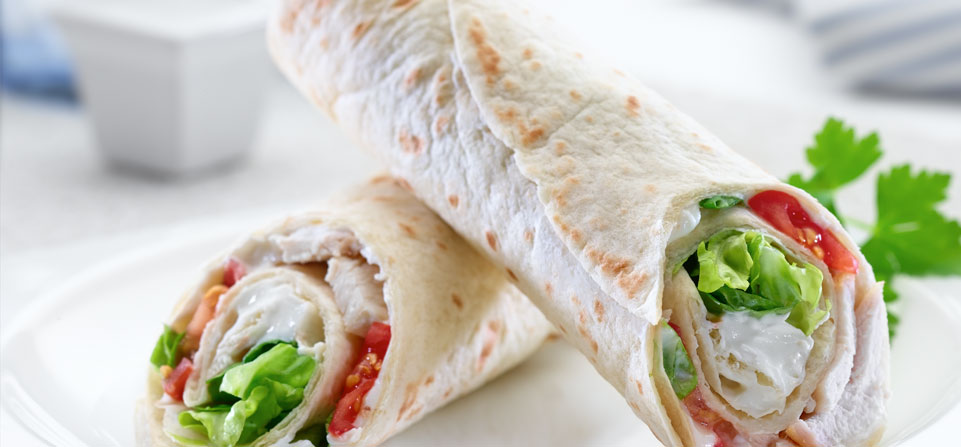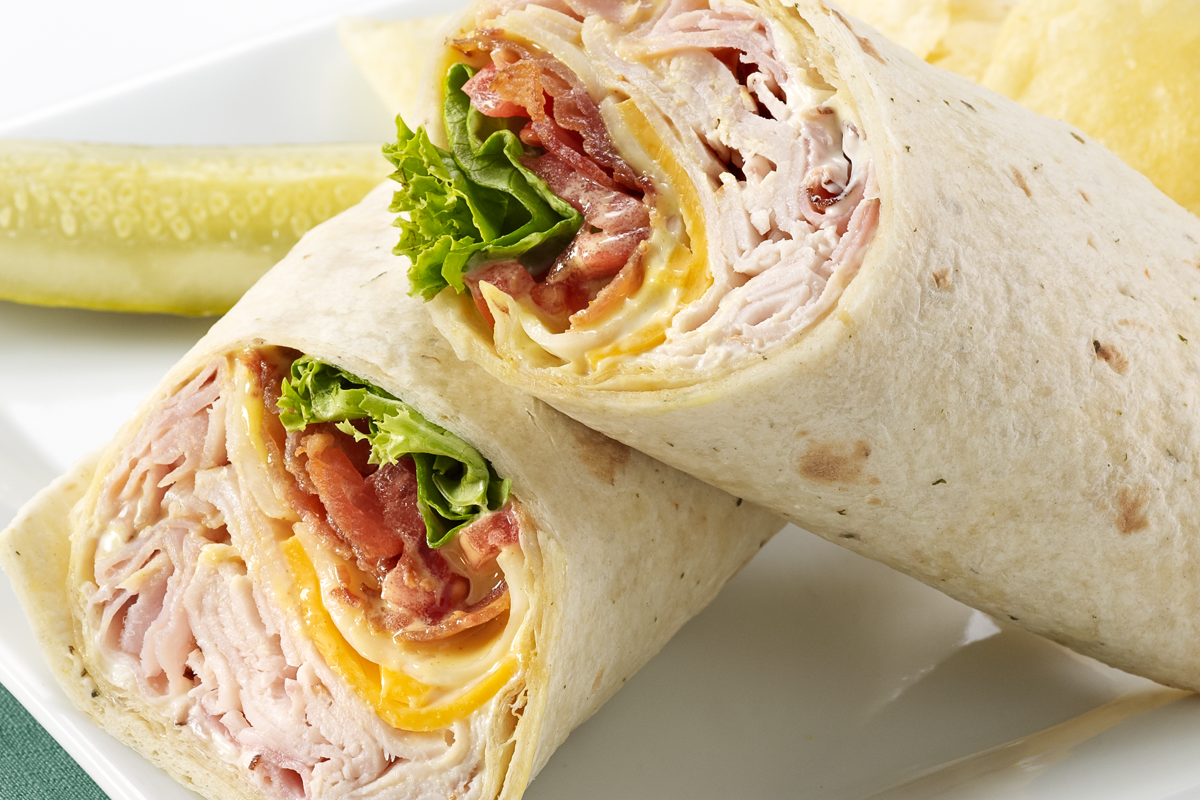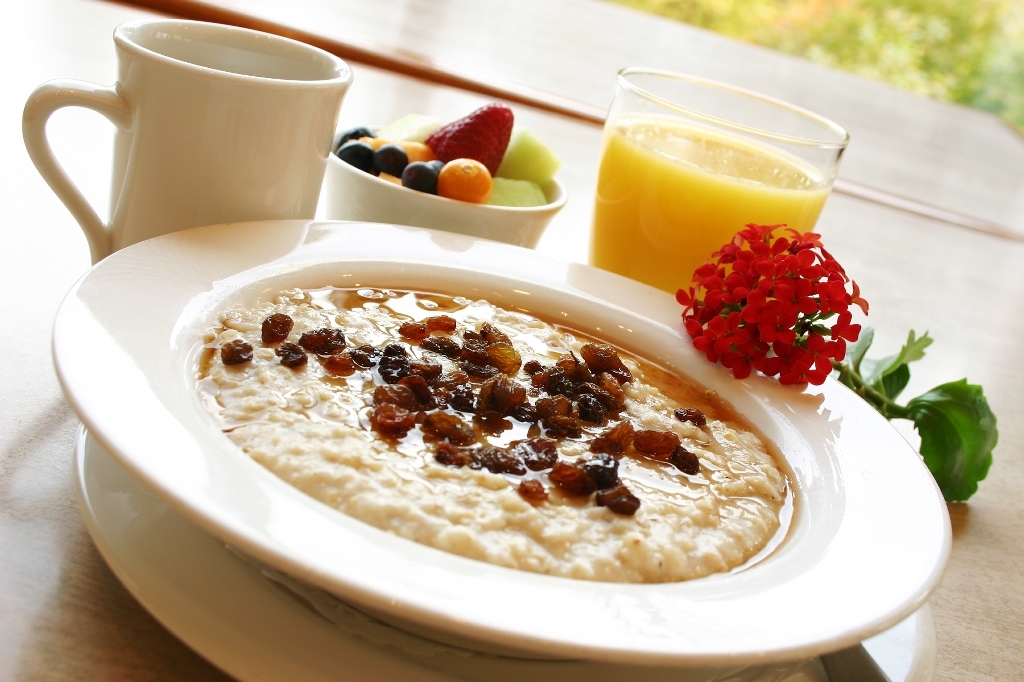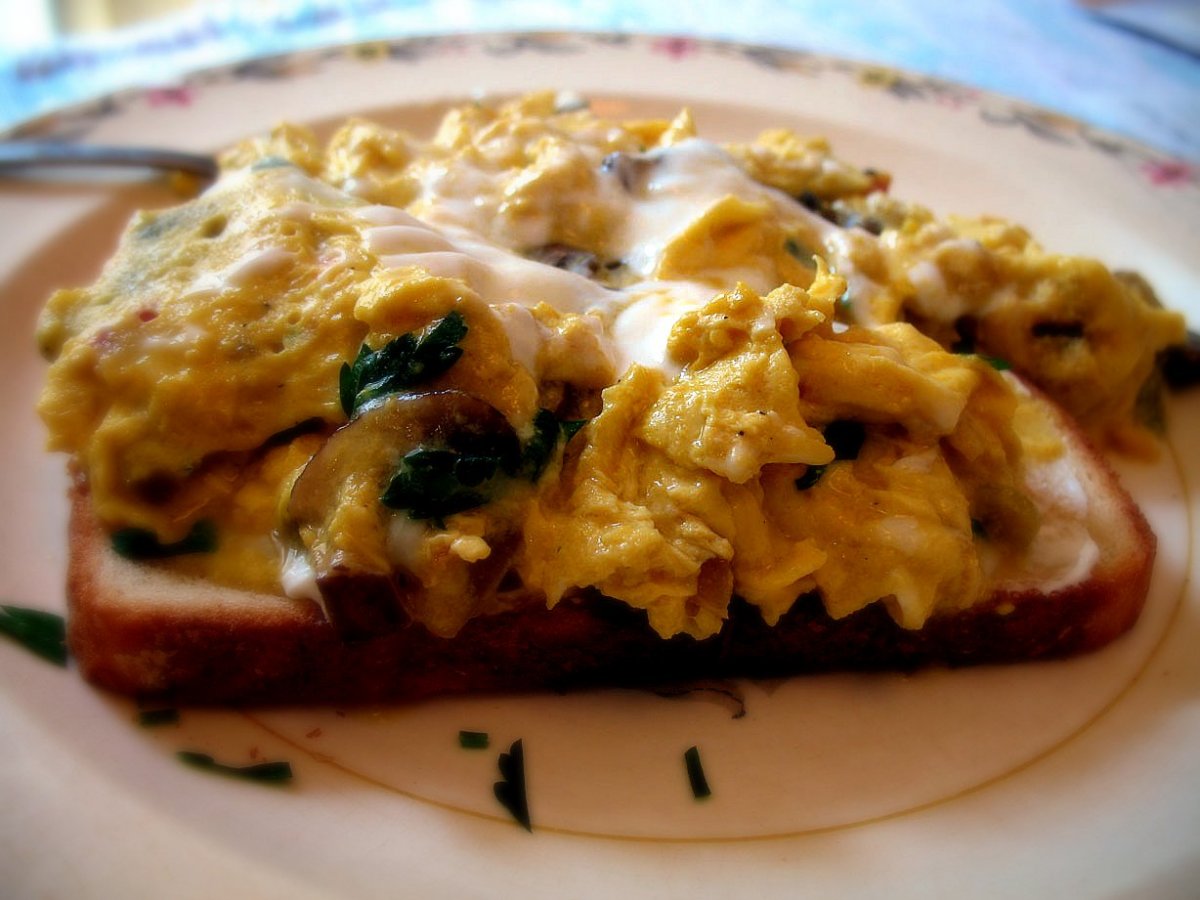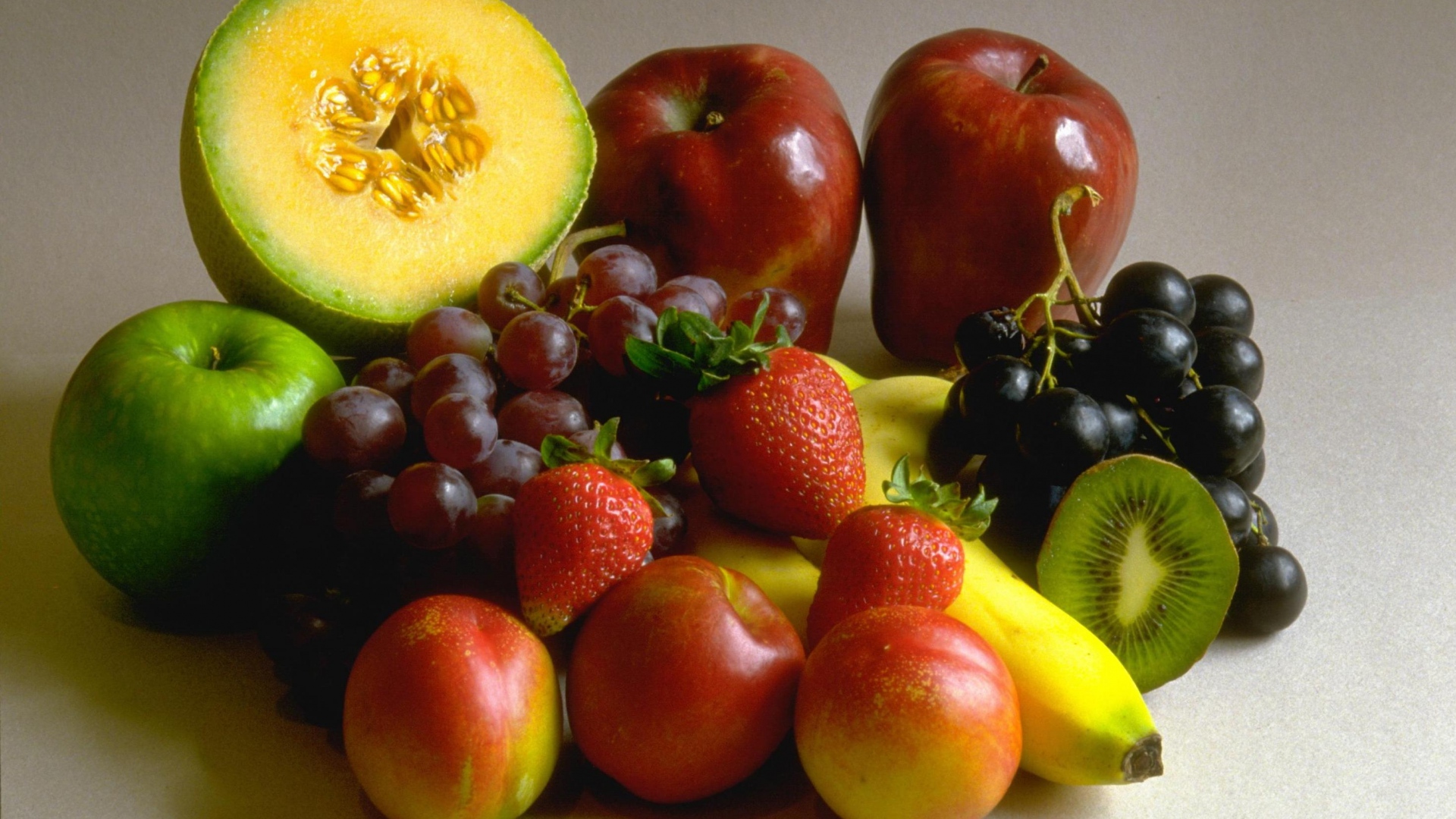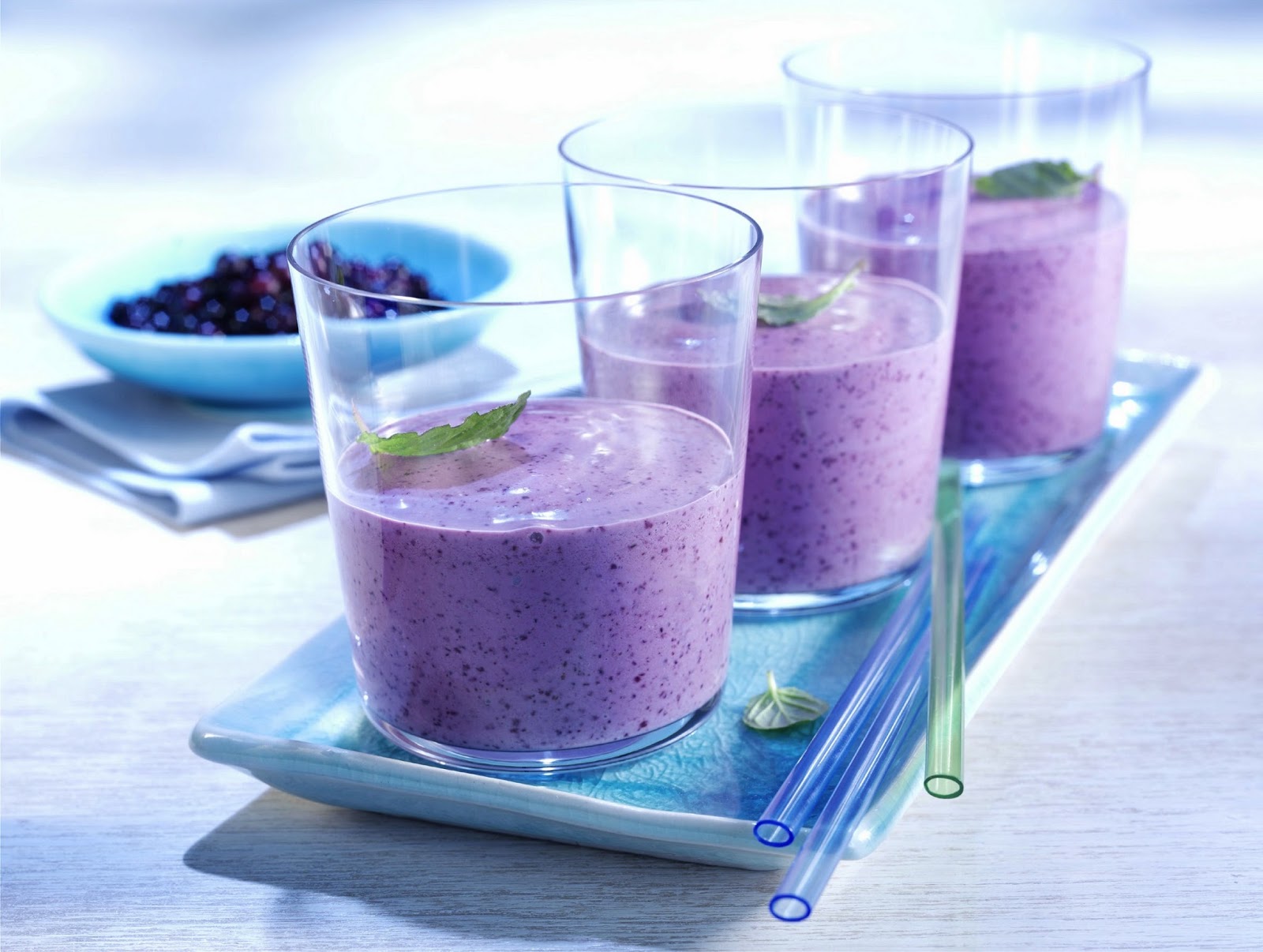Vegetarian wraps are a popular solution for people who want to enjoy tasty and nutritious food, that will fill them up and keep them going while they are on the move. Wraps are better than sandwiches – if they are made properly – because they are lower in calories and carbohydrates, and they tend to be higher in protein and in micronutrients, because they are more full of filling (the good stuff!) than they are of just grains. The wrap part itself is there just for something to hold on to, so that you can eat them without needing cutlery.
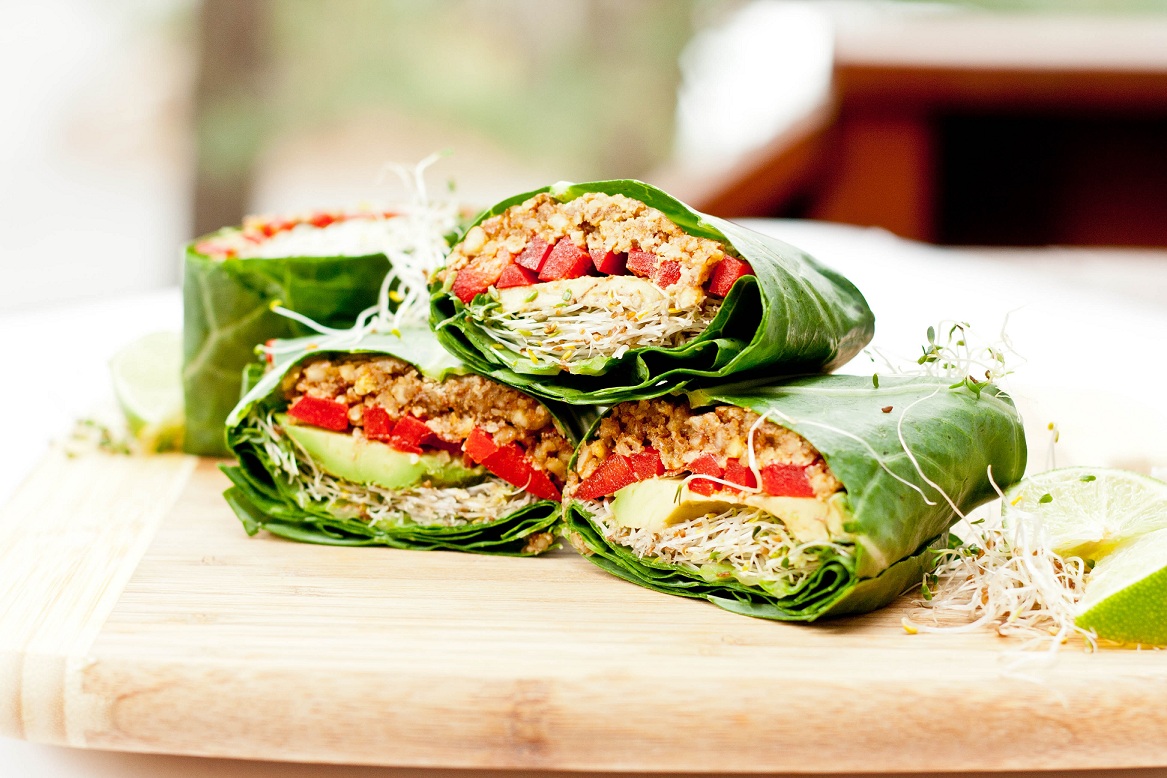
If you’re vegetarian, then you can enjoy wraps that contain vegetables and cheese (and even egg – if you are a lacto-ovo vegetarian). If you’re vegan, however, then you will need to be a little more careful with the ingredients you add, because many spreads, sauces and dressings contain animal products.
There are a few ways of getting nice texture in your wrap. Onions and peppers are crunchy, and you can add red pepper hummus or grilled zucchini to give the wrap a bit of extra flavour, and a nice juicy texture. Quinoa can go in a wrap too, adding bulk and a nice flavour. Some people use soy or tofu as a meat substitute, but this is a personal thing and not everyone agrees with the idea of adding meat-like dishes if you’re not really a fan of meat.
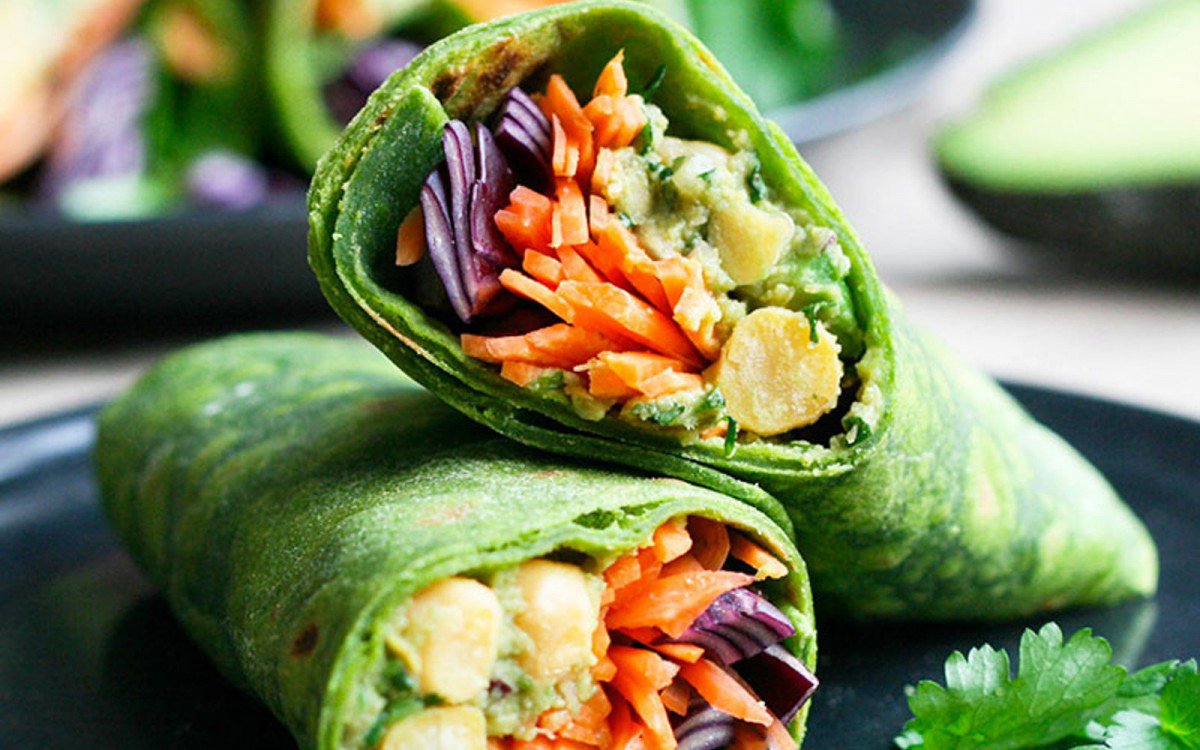
You may be wondering if it’s really healthy to “cut out an entire food group”, and it’s true that vegetarians do have to monitor their diets closely to make sure that they are getting enough protein – but if you’re someone who usually eats meat and you are just looking for some portable, healthy lunch ideas then there’s nothing wrong with doing the vegetarian thing for a single meal. Indeed, it could well do you good. Vegetarian wraps are crunchy and delicious – they’ll keep well compared to trying to keep a meat sandwich fresh until lunch time, and they’re satisfying to eat. They’ll help you get your five a day, and you’ll save calories (veegetables are less calorie dense than meat) for a later meal.
Don’t write off veggie wraps as being all about lettuce and tomato – it can be if you want – but hummus, cous cous, coleslaw, potato salad, peppers, falafel, chick peas, zucchini – they’re all options for adding to your wraps, and they’re tasty and nutritious.
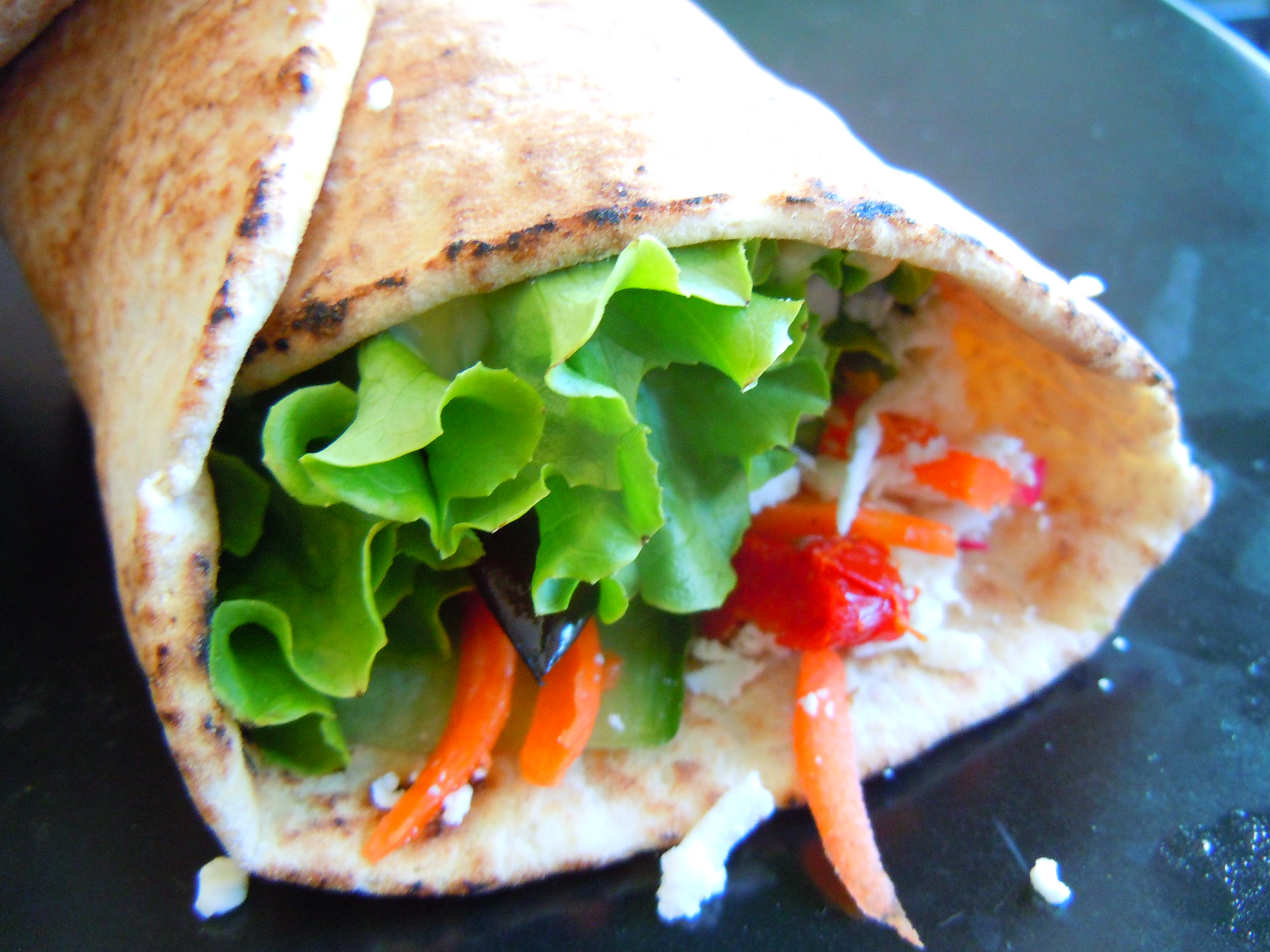
Get creative. A little cheese, some herbs and some fresh vegetables can fill out almost anything. You can even make sweet wraps with bananas and cinnamon if you want – there’s no need to limit yourself to savories.
Buy smaller wraps to make snacks for the kids, or slice tortillas in half for portion control. Try whole grain, brown wraps as well as white ones for a little different texture and flavor, and remember that a wrap can go with something else (soup, or fries if you’re treating yourself) for a main meal.
Burritos and fajitas are based on wraps, with warm ingredients such as black beans or fried onions and peppers. Be aware, though, that a burrito can have as much as 800 calories in it – which is great if you’re a man who leads an active lifestyle, but it is a large chunk of the daily calorie allowance for a smaller woman who works a desk job. It’s important to use common sense when you are working out how much to eat at each meal – vegetarian food, especially if it has avocado in it – can be very calorie dense.

